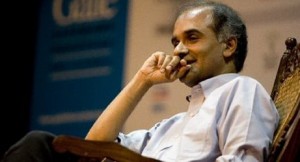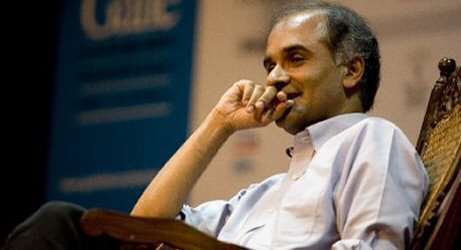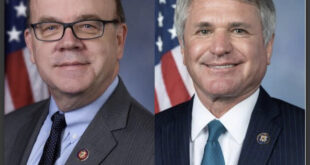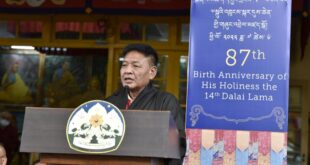(by Pico Iyer, The New York Review of Books, March 19, 2011)
It’s been startling to witness mass demonstrations in countries across the Middle East for freedom from autocracy, while, in the Tibetan community, a die-hard champion of “people power” tries to dethrone himself and his people keep asking him to stay on. Again and again the Dalai Lama (who tends to be more radical and less romantic than most of his followers) has sought to find ways to give up power, and his community has sought to find ways to ensure he can’t. It could be said that almost the only time Tibetans don’t listen to the Dalai Lama is when he tells them they shouldn’t listen to him. Now, on the eve of an important election for Tibet’s government-in-exile, he has announced he is relinquishing formal political authority entirely—and the Tibetan government has accepted his decision, even as the move has alarmed many around the world and struck some as the end of an era.

In truth, the Dalai Lama’s statement was merely a continuation—and a stronger expression—of what he has been saying for years: that political leadership for the Tibetan people (in exile at least) belongs with the democratically elected government-in-exile he has so painstakingly set up over decades in Dharamsala, in India (elections for a new prime minister are to be held March 20); that he will function only as a “senior advisor,” helping to oversee the transition to a post-Dalai Lama era; and, most important, that the spiritual and temporal sides of Tibetan rule will at last be separate. As he noted in the speech that mentioned his “retirement”—his annual state-of-the-nation address, in effect, delivered on March 10, the anniversary of the 1959 Tibetan uprising against the People’s Republic of China and a frequent day of protest—he has believed, since childhood, that church and state should not be one and that the fate of Tibet should be in the hands of all Tibetans.
Democracy, as the Dalai Lama sees it, is perfectly in tune with the Buddha’s central principles of self-rule and responsibility; it is one of the features of the wider world that long-isolated Tibet can and should now learn from; and it only stands to reason that the voices of all Tibetans be more important than that of just one—a logic that appeals to the scientist and the natural Everyman in him. Besides, the Fourteenth Dalai Lama will be 76 this July and the Dalai Lama institution cannot function as it did now that Tibet’s exiled leaders are separated from the 98 percent of Tibetans—some six million people—who live within the People’s Republic of China in circumstances of general repression and deprivation of political rights. Beijing has already “banned” reincarnations without government approval and all but announced that the finding of a “Fifteenth Dalai Lama” will lie under its jurisdiction as soon as the current, fourteenth, Dalai Lama dies.
Almost from the moment he arrived in Indian exile in 1959, the Dalai Lama drew up new constitutions for Tibetans both within Tibet and outside it, with one clause (over his people’s protests) allowing for the impeachment of a Dalai Lama, if necessary. Since then, he has carefully overseen a steady devolution of authority, setting up in Dharamsala first a parliament, then an elected Cabinet and, since 2001, a popularly elected prime minister (or Kalon Tripa, as Tibetans call it). In both the elections held so far—in 2001 and in 2006—the runaway winner has been the gentle monk Samdhong Rinpoche, whose Gandhian principles clearly meet with the Dalai Lama’s approval.
The Dalai Lama has constantly urged the Tibetan prime minister—and other government officials—to represent the political face of Tibet around the world, but none of them, of course (in a tiny exile community that numbers only 150,000 or so) possesses his natural charisma or standing in the eyes of the world. In that regard, Tibet as much as China has been a victim of the current Dalai Lama’s unusual charm and authority. And the many members of the Tibetan Youth Congress have traditionally presented a kind of loyal opposition, calling for a more forceful stance toward Beijing than the forbearance that the exile government, following the Dalai Lama, has always recommended.
But as exile Tibetans, especially in the West, see the urgency of gathering their resources now instead of waiting for the Dalai Lama’s death, there are indications that the exile government may get more involved in some of the official discussions with Beijing, which heretofore have mostly lain in the hands of the Dalai Lama’s representatives. The Dalai Lama’s hope, clearly, is that with each passing season, his exile government will be more and more of a self-sufficient body (chosen by Tibetans from around the world). In the run-up to the March 20 election for a new prime minister, there has been an extensive and eagerly contested campaign, with 17 candidates (among them three women) now whittled down to three finalists. Two of the three, Tenzin Namgyal Tethong, 62, and Tashi Wangdi, 64, are decades-long veterans of the Dalai Lama’s government-in-exile and the third (and current favorite) is Lobsang Sangay, 43, a Fulbright Scholar who holds a doctorate from Harvard Law School and has been more open to calls for Tibetan “self-determination,” a subject the Dalai Lama has avoided but that is popular with more radical members of the younger exile generation. (Sangay’s dissertation, in fact, was on the very subject of democracy and the Tibetan government-in-exile.)
Responding for the first time with energy and evident excitement to their new opportunities, exiled Tibetans have held debates among the candidates, in New York and Washington and Toronto and elsewhere; flashy websites have been set up, with tributes to the candidates (“Kasur Tashi Wangdi is like Dumbledore from the Harry Potter series”); and none of the final candidates is a monk. (The Tibetan Charter calls for a maximum of two terms for any prime minister, so Samdhong Ripoche, beloved of elderly Tibetans, is stepping down). Democracy has come to neighboring Bhutan—after its king likewise imposed it on a reluctant populace four years ago—and it is showing signs of arriving in Nepal. The Dalai Lama clearly feels that the process can wait no longer and that he must push his people into full self-governance, at a time when he’s around and can, if necessary, offer encouragement and the fruits of his experience.
It’s easy to understand why Tibetans have clung for so long to the Dalai Lama’s leadership as if to their sense of themselves. He’s the only ruler most of them have known, for seventy-one years now, and pretty much the only Tibetan who can recall dealing with India’s founding statesman, Pandit Nehru, and spending a year traveling around China and talking to Mao Zedong. He is one of the last remaining symbols of the Tibet that existed for three hundred years, until the Chinese crossed Tibet’s eastern border sixty years ago. And, of course, for Tibetans the Dalai Lama is regarded as an incarnation of Chenrezig, their god of compassion, and few devout believers are likely to listen to a political candidate—even one they have elected—over a god.
Yet the Dalai Lama’s gift as a political leader has always arisen from his no-nonsense pragmatism and his monastic habit of looking to the long-term (in part, of course, because he’s never been hostage to electoral cycles, even as he’s no mere ceremonial monarch). When he tells the world that his concern is not with the Dalai Lama but with the welfare of Tibetans, he’s being characteristically precise: this Dalai Lama may not last many decades longer and, as he often stresses, the Dalai Lama institution may have outlived its usefulness. But Tibetans are going to be around for a long time, one hopes, and unless they have some experience at governing themselves, they will not begin to be effective even if those currently in exile can one day return to Tibet.
Spiritually, of course, the Dalai Lama can never retire, and can no more renounce his incarnation than any one of us can try to erase his blood or his DNA. So long as he’s around, it’s hard to imagine any Tibetan prime minister overruling him (though, of course, more and more Tibetans have been agitating for a more forceful, even confrontational approach to the deadlock with Beijing, criticizing his “Middle Way” policy even if they never criticize the man). But it’s part of his clear-headedness to see and acknowledge that political leadership may require a very different kind of training from the spiritual kind, and the conflation of the two can make for confusion. When I said to him—three years ago—that to some of us it seemed refreshing to have someone with a monk’s larger vision and moral clarity in the realm of politics, he acknowledged that it could work well, but in principle should not be encouraged.
One of the curious aspects of this global Dalai Lama’s life is that his every political statement is usually addressed to many audiences at once, not least the 6 million Tibetans in Tibet he can barely meet and the government in Beijing that he has not been able to see face-to-face. In announcing his “retirement” ten days before Sunday’s election, he was telling fellow Tibetans to seize the moment, and he was reminding the Chinese government that however much it tries to hijack or neutralize the Dalai Lama institution, political leadership among at least exiled Tibetans will remain firmly out of reach, in Dharamsala. He managed to be, in equal measure, a parent telling his charges, “I’m leaving soon (so start taking care of everything yourselves)”; and a seasoned strategist telling those who distrust him in Beijing, “If you think I’m a threat to you, or an obstruction to better relations with Tibetans, I’ll relinquish all my official power right now. Will you talk more productively to us now?”
China is never likely to worry very much about a government-in-exile in an Indian hill station representing only 2 percent of Tibetans. But the Dalai Lama’s official relinquishing of political leadership was one way of underlining to Beijing that the Tibetan problem will not go away when he dies, and that there will still be Tibetans pressing for a (probably peaceful, negotiated) settlement to the issue, to counter the more confrontational firebrands often featured in the press. Meanwhile, those in Tibet itself continue to wait for the most basic human rights, transparency and real democracy to come to them from Beijing. On March 16th, according to a report from Dharamsala, a 21-year-old Tibet monk in Sichuan Province set himself fatally alight in his monastery, both to protest Chinese rule and, perhaps, to try to spark uprisings akin to the ones seen recently in Egypt and Tunisia.


